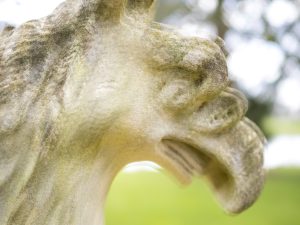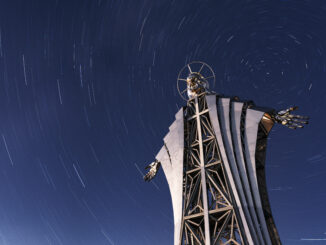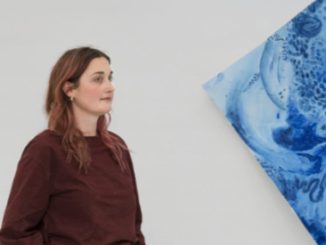 A KEEN EYE ON OUR PAST – AND FUTURE
A KEEN EYE ON OUR PAST – AND FUTURE
CAPTURING THE world from behind a lens has been Caversham resident Dylan Garcia’s profession for more than three decades. However, while his photographs of people and places have frequently appeared in a wide range of national newspapers and magazines from the Financial Times to Homes and Gardens, he has more recently decided to explore the potential of photography beyond recording scenes.
“In 1980 I completed a BA at the Norwich School of Art, where I concentrated on photography. Since then, I have done a range of jobs, including working for an environmental charity. My photographs are what are known as ‘stock work’ – often of well-known places, such as Windsor, or landscapes. I upload my work, and newspapers and magazines, such as The Guardian and Homes and Gardens, spot my images, and pay for their use.
“However, I have recently enrolled at Falmouth University to do an online MA. This is very different from the work I was doing. Previously I was concentrating on just taking the photo, then moving on. With this course, I am now looking far more deeply into my subjects. I am taking a far closer look at the work of other photographers, artists and thinkers.
“For example, recently I have been looking closely at Japanese photography. I am inspired by their style, but I am trying to re-create it with an added ‘British’ touch – while capturing this sense of the amazingness of life and creation,” Dylan explained.
Dylan’s powerful and evocative creative work clearly captures the beauty of the world around us. But his photographs of both the natural world, as well as the built environment, in scenes we all pass every day are no longer ‘stock shots’: through his artistry, use of various photographic techniques and even the paper his work is printed on, his images appear timeless, even mythological.
 “I have become interested in ideas around time,” he said. “For example, we know that lions and hippos once lived along the Thames. Due to global warming, Britain is heading once again to becoming tropical. So nowadays my photographs refer to the past but also look to the future and what will happen due to climate change.”
“I have become interested in ideas around time,” he said. “For example, we know that lions and hippos once lived along the Thames. Due to global warming, Britain is heading once again to becoming tropical. So nowadays my photographs refer to the past but also look to the future and what will happen due to climate change.”
Dylan’s work will be exhibited in Reading Central Library this April, entitled Brythonic Thousand: a project on History, Mythology, Climate Change and Hope. He has a particular fascination with the ancient Celtic peoples, as well as lost and drowned lands (hence the title ‘Brythonic’, referring to the people and languages of Wales, Cornwall and Brittany). Having moved to Caversham six years ago from the Isle of Wight, Dylan is now enjoying discovering both the natural beauty as well as the history of his new home.
“I enjoy cycling, so I love the fact that in ten minutes I can cycle from Caversham and be in the Oxfordshire countryside. But I also love cycling along the Thames, towards Pangbourne and Goring. I was thrilled to find the bluebells in the woodlands on the way to Pangbourne. But more locally, I have enjoyed discovering Balmore Park, and have been inspired by the Abbey ruins in Reading itself,” he enthused.
 “And because I live here, I wanted to have my exhibition in the area. The people at the Central Library have been so helpful as I have been preparing to set it up. Doing the exhibition has made me focus on completing a lot of my projects … so often, you have ideas, but you don’t actually get to complete them. In thinking about my exhibition, I have had to think hard about the space I have to fill, and what will look good together.
“And because I live here, I wanted to have my exhibition in the area. The people at the Central Library have been so helpful as I have been preparing to set it up. Doing the exhibition has made me focus on completing a lot of my projects … so often, you have ideas, but you don’t actually get to complete them. In thinking about my exhibition, I have had to think hard about the space I have to fill, and what will look good together.
“I have done a few exhibitions in the past, on the Isle of Wight and in Falmouth. It is so different from the work I used to do taking stock shots. Everything is now beginning to coalesce,” he said. Creating a powerful image through a variety of techniques is central to Dylan’s work. Visiting Photo London at Somerset House provided inspiration. “I noticed the use of silver paper and realised that this was another way a photographer can create an effect – just as an artist with paints might choose a certain material to paint on, so a photographer can print an image on different materials. So now I take care to choose the right sort of paper for the effect I want.
“Visitors to my exhibition will be able to slow down as they see my photographs. It really is an opportunity for an antidote to the mass of photos we all see on Facebook and Instagram – I hope that in going to the exhibition, people do spend some time looking at the work.”



